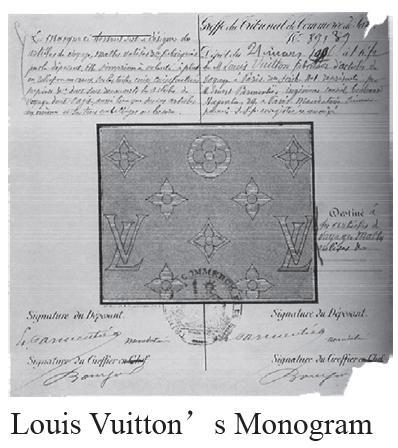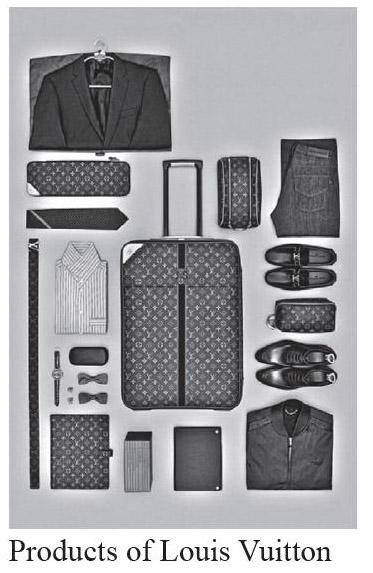Louis Vuitton’s success
ZHAO DANSHU


Traditionally, there is seldom luxury brand to be unfailing for many centuries. However, Louis Vuitton is one of these brands. Initially, Louis Vuitton was an apprentice packer and trunkmaker. In 1854, he founded his House and invented flat-topped trunks. This invention helped to establish his reputation as a master luggage-maker. And then, Vuitton started covering his trunks with grey Trianon canvas, which was the first time he became well-known to the public. The reasons why the company has been very successful are its products, ideas and commercial management.
One of the reasons for Louis Vuittons success is the ability of the company to reply to the altering modes of travel, which appear in a surprise rate in the second half of the nineteenth century. In addition, his son, Georges Vuitton, played an essential role in the business of company. He created the Damier Canvas in 1888 and the Monogram in 1896, which were well known as the icons of the brand. Anther icon was the Monogram canvas. By the time the company got its centenary in 1954, the Vuitton monogram was one of the most identifiable logos in the world (Johnston 2012). In memory of his father, Georges new design had LVs, his fathers initials, against a background of stars and flowers; it was obvious and become a direct success.
As the business grew increasingly successful, the companys success and reputation for luxury resulted in a huge wave of counterfeit Louis Vuitton products. Georges son, Gaston, worked for his father as economic conditions worsened all over the world. In 1970, Gaston Vuitton resolved against the counterfeiters by opening a store in Tokyo; by offering the actual Vuitton product in the Asian market, he hoped to notify customers better and reject the purchase and manufacture of imitations. The company undertook a wonderful advertising campaign battle against the rise in counterfeits as well.
Furthermore, Louis Vuitton got a vast commercial success by the advertising campaign. Marc Jacobs, a New York designer, was hired as the companys creative director in 1997. He brought famous people and celebrities to the brand, such as Uma Thurman, Angelina Jolie, Sean Connery and Mikhail Gorbachev. The rate of selling rapidly in creased as a result of his actions.
Nevertheless, in 1987, Louis Vuitton and other luxury brands included Givenchy, Veuve Clicquot and Loewe, creating a family business organization. They combined with Moet Hennessy to build what was to turn the worlds biggest luxury conglomerate, LVMH (Johnston 2012). In 1996, LVMH requested seven designers to design special pieces to celebrate the centenary of the launch of the classic Monogram canvas. The consequences were so successful that LVMH head Bernard Arnault was determined to launch Louis Vuitton as a fashion label. In the twenty-first century, the companys success relied on its ability to use the enormous capital of its keeping company and the dynamism of Bernard Arnault, while holding the high quality of construction and materials which built the companys reputation in the past.
Although Louis Vuitton achieved vast success in the fashion industry of the world, there have been many difficult moments during in this process. However, the company depended on its products, ideas and commercial management to achieve success. As a result, the company has established an enviable reputation for quality.
Figure1:
(THE ICON: LOUIS VUITTONS MONOGRAM. Available from:
Figure 2:
(Johnston, R. (2012) “King Louis”, GQ Magazine, Available from http://www.gq-magazine.co.uk/style/articles/2012-07/12/louis-vuitton-history-of-luxury-label-and-outlets-shops-bags-shoes [Accessed 20 February 2015].)
References:
[1]Johnston, R. (2012) “King Louis”, GQ Magazine, Available from:http://www.gq-magazine.co.uk/style/articles/2012-07/12/louis-vuitton-history-of-luxury-label-and-outlets-shops-bags-shoes [Accessed 20 February 2015].
[2]Louis Vuitton (the history of the company). Available from: http://www.encyclopedia.com/topic/Louis_Vuitton.aspx. [Accessed 10 February 2015].
[3]THE ICON:LOUIS VUITTONS MONOGRAM.Available from:

